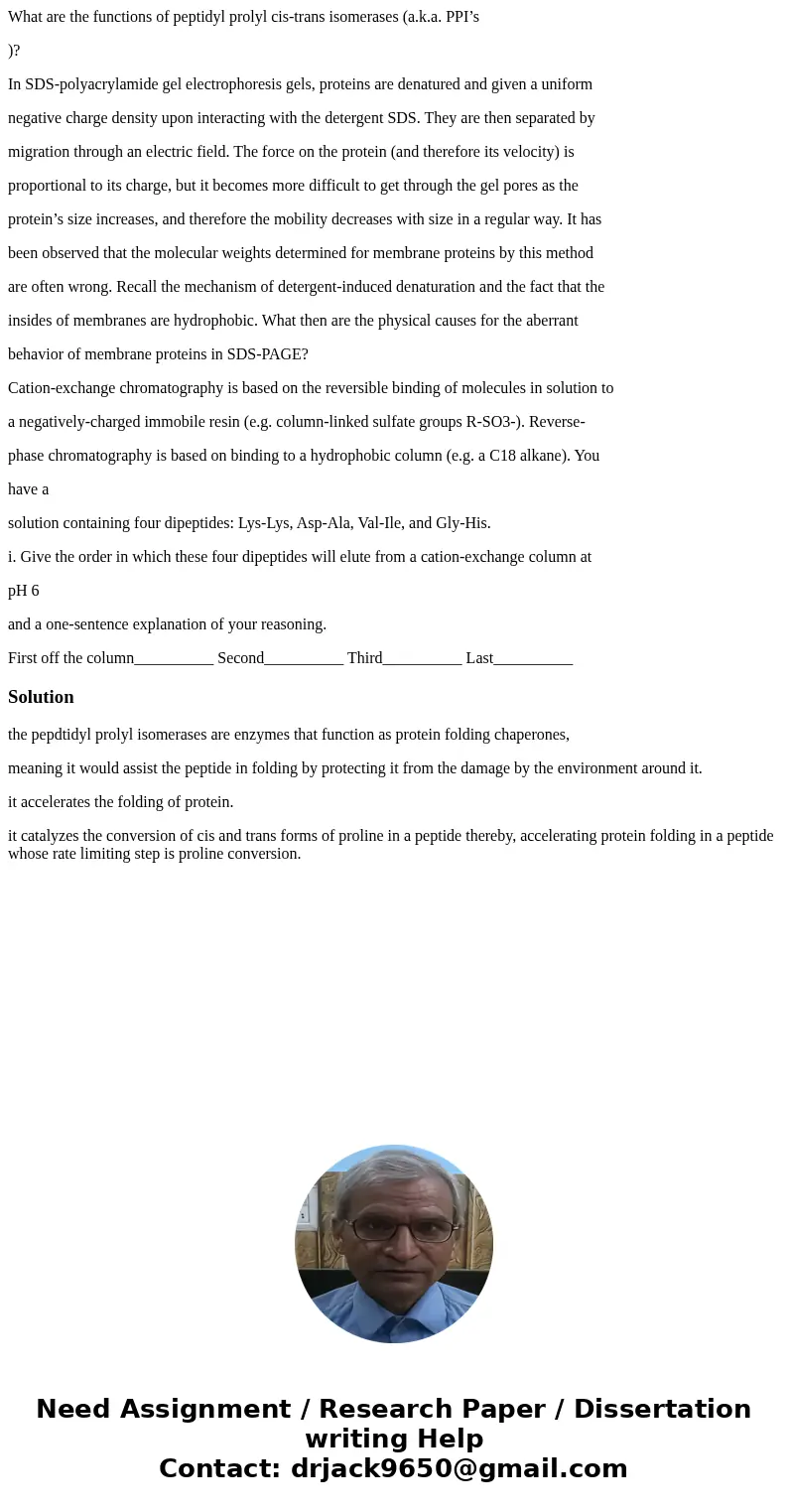What are the functions of peptidyl prolyl cistrans isomerase
What are the functions of peptidyl prolyl cis-trans isomerases (a.k.a. PPI’s
)?
In SDS-polyacrylamide gel electrophoresis gels, proteins are denatured and given a uniform
negative charge density upon interacting with the detergent SDS. They are then separated by
migration through an electric field. The force on the protein (and therefore its velocity) is
proportional to its charge, but it becomes more difficult to get through the gel pores as the
protein’s size increases, and therefore the mobility decreases with size in a regular way. It has
been observed that the molecular weights determined for membrane proteins by this method
are often wrong. Recall the mechanism of detergent-induced denaturation and the fact that the
insides of membranes are hydrophobic. What then are the physical causes for the aberrant
behavior of membrane proteins in SDS-PAGE?
Cation-exchange chromatography is based on the reversible binding of molecules in solution to
a negatively-charged immobile resin (e.g. column-linked sulfate groups R-SO3-). Reverse-
phase chromatography is based on binding to a hydrophobic column (e.g. a C18 alkane). You
have a
solution containing four dipeptides: Lys-Lys, Asp-Ala, Val-Ile, and Gly-His.
i. Give the order in which these four dipeptides will elute from a cation-exchange column at
pH 6
and a one-sentence explanation of your reasoning.
First off the column__________ Second__________ Third__________ Last__________
Solution
the pepdtidyl prolyl isomerases are enzymes that function as protein folding chaperones,
meaning it would assist the peptide in folding by protecting it from the damage by the environment around it.
it accelerates the folding of protein.
it catalyzes the conversion of cis and trans forms of proline in a peptide thereby, accelerating protein folding in a peptide whose rate limiting step is proline conversion.

 Homework Sourse
Homework Sourse